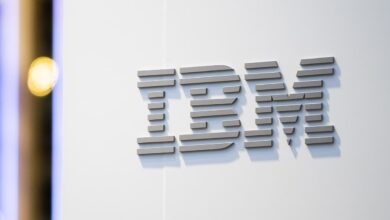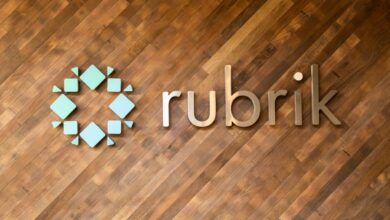To save Social Security, they may come for your 401(k)

It looks like we had better ramp up our 401(k) and IRA contributions to the absolute max while we still can, folks.
That means a full $30,000 this year, and more if you’re 50 or older: The 401(k) maximum for 2024 is $23,000 and the IRA maximum is $7,000, and savers who are 50 or older can make additional contributions. It may also mean converting your traditional pretax IRA to a post-tax Roth IRA in order to maximize the after-tax amount in your shelters.
The reason? There is talk in policy circles of getting rid of these plans entirely — or at least ending the tax breaks, which pretty much amounts to the same thing. That would be a political shock and a financial earthquake, especially for the middle class.
Policy wonks argue that these accounts mainly benefit very high earners while doing little to increase savings. They want to use those extra taxes to bail out Social Security, which is hurtling toward a crisis.
Allison Shrager of the Manhattan Institute has just written about this idea. Boston College’s Center for Retirement Studies wrote about it last month. University of Virginia law professor Michael Doran helped get the ball rolling a few years ago, calling these middle-class tax shelters a “fraud” that mainly benefit the rich.
At the moment nobody is talking about anything retroactive: They wouldn’t start imposing taxes on money that’s already been contributed into these accounts. Rather, the idea would be to end the tax deductions in the future, replacing them with some other system that doesn’t feature the same deductions.
How serious is this? Nobody knows. At the moment it’s just talk. But Social Security is in crisis. Eventually they’ll either have to cut benefits or raise taxes.
The argument against 401(k) plans and IRAs is that they are regressive: They benefit high earners the most. That isn’t entirely false. Clearly, if someone pays a higher tax rate, they will get more benefit from a tax deduction. If you contribute the maximum $23,000 to a 401(k) plan and you are in the top federal tax bracket of 37%, you will shave $8,500 off this year’s tax bill. If you’re in the 15% federal tax bracket, you will save less than $3,500.
But there are multiple issues with this line of argument.
As MarketWatch’s Robert Powell pointed out when this idea first popped up a while back, these accounts don’t let people avoid taxes altogether. They just defer them. So reports of the regressive nature of the tax break may be exaggerated.
And, yes, tax shelters help the rich, but they also help the middle class — who often really need them. These plans can make a real difference to families trying to save for their retirement while making ends meet and also, for example, saving for their kids’ college education. Torpedoing a lifeboat used by the middle class on the grounds that it might also be carrying some rich people seems very 1917.
Meanwhile, high earners get a bigger tax deduction on their contributions only because … er … they pay more taxes in the first place. Obvious, but worth repeating.
It’s also not entirely clear how regressive these tax shelters really are. If you work all your life at median-income jobs, save aggressively and benefit from luck and a bull market, you may retire with a huge 401(k) balance. Lucky you. But you may end up paying a higher tax rate on the withdrawals than you would have done on the contributions, which means you may not be that much better off at all.
That’s not a complaint, that’s an observation. It’s how the system is supposed to work. It’s progressive. If you end up retired with very little money, on the other hand, you will pay very little tax on your withdrawals.
These tax shelters also have a bunch of important practical benefits for savers. They help people invest in bonds, for safety, as well as stocks, for growth. Bond income and interest income are typically taxed at much higher rates than stock income. Tax shelters leave people free to change and rebalance their portfolios without triggering extra taxes. Incidentally, and this is not nothing, they also free people from some absolutely insane, stupid and largely pointless IRS paperwork every year.
These tax shelters also make simple, intuitive sense. I pay tax on my income, which is money I can use right away. I can’t use my retirement savings for decades. I will only pay tax on that when I withdraw it from the account to spend it.
According to Boston College’s calculations, ending tax-deferred 401(k) plans and IRAs would raise $185 billion a year in extra taxes.
You know what else would raise almost exactly the same amount? Just a small — tiny — tax on the assets of the super-rich.
According to Federal Reserve numbers, the richest 0.1% now own 12.4% of all the wealth in America. Back in the late 1980s, during the era of Ronald Reagan and George H.W. Bush, that group owned 7.6% of the wealth.
Their total assets now stand at $20 trillion. A 1% tax would raise $200 billion without touching the retirement-savings vehicles of the middle class.
Many of these wealthy people, luckily for them, pay very little in taxes, or even none at all. They may not even show up in the IRS tables of “high earners.” You may remember when someone from this group ran for president a decade ago and released his tax returns. Turns out Mitt Romney wasn’t paying a rate of 50% or 37%, but 14%. And many of the really, really, really rich pay even less — or nothing.
The average return on equity, historically, has been about 10%, in nominal terms. So a 1% tax is bupkis.
But such a tax unlikely to happen. It would upset the donor class. Instead, they may come for you and me. As analysts pointed out a decade ago, the rich get what they want out of Washington, time and again. And while people may criticize the American system all they like, it’s still the best one money can buy.
Source link





